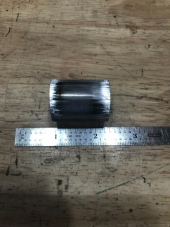
 3
3




 1
1




 1
1








--------------------
Be Content. And work for more time, not money. Money is inconsequential.








 1
1








 1
1





 1
1




"...specialization is for insects." - Lazarus Long
Universal Introduction to Permies
How Permies.com works




 1
1




 1
1








--------------------
Be Content. And work for more time, not money. Money is inconsequential.
 1
1





'Theoretically this level of creeping Orwellian dynamics should ramp up our awareness, but what happens instead is that each alert becomes less and less effective because we're incredibly stupid.' - Jerry Holkins




 2
2








Dillon Nichols wrote:Very cool. Nothing like some judicious overkill!

EXACTLY!! Hahahaha
 1
1












'Theoretically this level of creeping Orwellian dynamics should ramp up our awareness, but what happens instead is that each alert becomes less and less effective because we're incredibly stupid.' - Jerry Holkins




 1
1


















God of procrastination https://www.youtube.com/watch?v=q1EoT9sedqY













God of procrastination https://www.youtube.com/watch?v=q1EoT9sedqY









Chadwick Holmes wrote:I very much like that double ended one! Do you know how long each side was? Some of those pictures look like they are quite long!

God of procrastination https://www.youtube.com/watch?v=q1EoT9sedqY

|
A magnificient life is loaded with tough challenges. En garde tiny ad:
Freaky Cheap Heat - 2 hour movie - HD streaming
https://permies.com/wiki/238453/Freaky-Cheap-Heat-hour-movie
|







